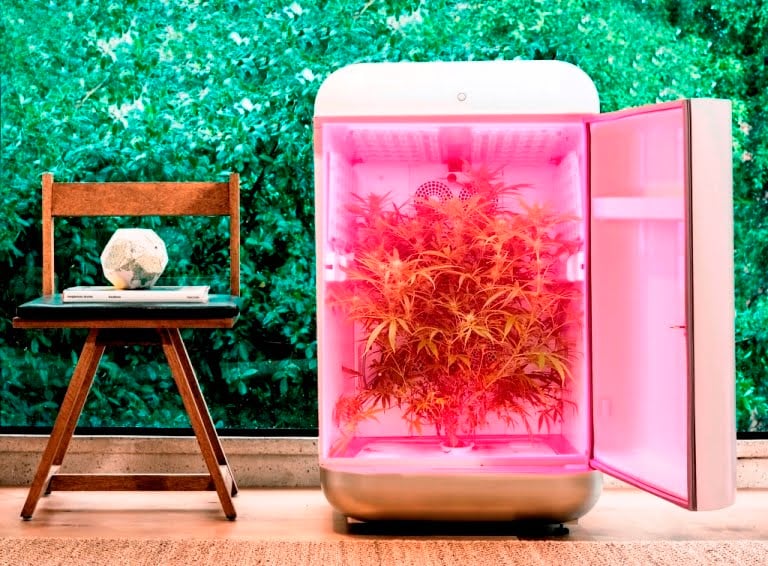How far are we from getting a prescription like “Have a joint before bed and call me in the morning”? Being a taboo for a long time, cannabis is starting to raise attention from international investors, entrepreneurs, and scientists, because of the benefits it can have on the healthcare industry, as well as the opportunities/ new avenues created by cannabis technology.
To many, however, cannabis is still a gray topic, making it hard to objectively assess the potential of the plant. And even though cannabis, and more specifically hemp, was once seen as a staple in the manufacturing of industrial products such as ropes and textile, today the use cases of the cannabis plant multiply as technology steps in the game.
Besides the general public attitude, legislation or the lack of it plays a key role in the cannabis industry. This does not stop the “the cannabis believers” who keep raising bets on the plants ahead of legislation. Last week, for example, we saw that hip-hop artist Snoop Dog’s cannabis VC firm, Casa Verde led a $15M round in a German cannabis distribution platform.
The SEE region is also starting to wake to the opportunities of the cannabis industry, which is expected to reach a $128B global market size by 2028. To make better sense of the cannabis technology sector, here’s our short market overview, with insights from Pavel Ezekiev, founder of the investment funds NEVEQ and Neo Ventures, and investor in the Israeli cannabis startup GemmaCert.
In the weeds: introduction to the cannabis industry
Back to basics, cannabis as a plant has different types of flower strains – marijuana and hemp that look very much alike. Hemp, however, contains as little as 0.3% of the psychoactive chemical THC (Tetrahydrocannabinol) and basically can’t have any “high” effects on the body. It is, however, very rich in protein and strong plant fibers which makes it perfect for use in the textile, manufacturing, and consumables industries. It is a sustainable material used for the production of plastic polymers, construction products, fabrics, wood, biofuel, paper, and even car components. The first house constructed with hempcrete, a carbon-neutral building block made of hemp, was built in 2019 by the Dutch company Dun Agro Hemp Group.
Despite that, however, hemp is still considered illegal to grow and sell in many parts of the world due to its resemblance with marijuana. Around 30 countries, including France, Greece, Romania, Slovenia, and Turkey allow commercial production of hemp.
But the real elephant in the room, where opinions of authorities, scientists, and consumers start to diverge is marijuana – the cannabis plant that contains more than 0.3% THC.
Tetrahydrocannabinol (THC) and cannabidiol (CBD) are the two most discussed elements, or cannabinoids, which can be found in the different strains of marijuana. Depending on their ratio in the marijuana strain, the effects on the human body are different. Even though there are still scientific discussions, THC is said to have psychoactive properties which produce the “high” effect of cannabis. Thus, strains which are high in THC can be helpful for people who struggle with physical pain, insomnia, and depression. But they can make some people feel overly anxious.
On the other hand, CBD, which is the element that gets more people interested in experimenting with cannabis both as a consumable and a business opportunity does not create a “high”. It has a positive impact on mood and psychoses. However, despite its reputation for inducing calm, CBD can be a stimulant in small and monitored doses.
Cannabis technology: use cases in the industry
It all starts with the cultivation side of cannabis which can be done either outdoors or indoors in warehouses. Usually, recreational cannabis is grown indoors because the strength of THC and CBD increases with artificial lighting, which opens the doors for startups developing LED lighting devices.
Besides cultivation devices, some companies develop apps and software that help cultivators monitor the growth and the quality of their cannabis.
More innovations happen in the fertilization and hydroponics space. An example of that is the AI-powered Israeli cannabis startup Seedo, which develops hydroponics for weed and herbs.

On the distribution side, there is not much innovation happening, as there are still a lot of regulations and diverging trafficking rules which might make shipping of legally grown cannabis products illegal to another country.
One side that not many think about is the testing of cannabis which allows consumers to understand exactly what strain they are buying, what quality it is, and what effects it would have on them. Just like the nutritional information on foods we buy in the supermarket or the label on alcoholic beverages.
This is the sub-vertical that GemmaCert, part of the portfolio of NEO Ventures, operates in.
The company develops the world’s first analytical eco-friendly device for the precise verification of the potency of cannabis flowers. The solution of GemmaCert is helpful for growers, processors, distributors, and dispensaries along the cannabis value chain. The Israeli cannabis startup combines advanced optics and imaging analysis with an integrated cloud database to provide accurate quality assurance.
“GemmaCert does not replace the need for cannabis to be tested in laboratories. It complements the model of laboratories in the points where they are either not present or are not a practical solution for the end-user. With the cannabis market growing at 30% per year in the past 10 years, the number of producers in parallel is growing rapidly,” Ezekiev explains.

Then a very key step that allows cannabis to find many more use cases is the extraction process which allows scientists to take focal chemical constituents from the plant and use them afterward for medical and recreational purposes. This process opens up space for innovation in all kinds of extraction equipment.
And lastly, there is the retail side of the cannabis industry. Even though retail recreational cannabis does not open many doors for cannabis technology and innovation, the medical use of the plant involves the production and infusion of drinks, oils, lotions, and edibles. Another Israeli startup Syqe Medical, backed by Phillip Morris, produces medical cannabis vaporizers that ensure a consistent dosage with each inhale.
Emerging and future use cases in the cannabis technology vertical include also AI-powered DNA sequencing of cannabis, e-commerce apps that help users find nearest dispensaries, shop cannabis-based products, and learn more about the plant. IoT technologies can also play a big role in product tracking and allowing governments to have an additional level of transparency.
The cannabis technology scene in Europe
“Cannabis regulations treat three factors – the cultivation of the plant, the retail trading, and the ownership of cannabis. There are few countries where both the medical and recreational marijuana industry is fully regulated – Uruguay, Canada, and Malta. Additionally, there are around a dozen countries around the world where the cannabis industry is neither fully regulated, nor entirely unregulated which makes it a grey zone. In The Netherlands, for example, you can cultivate cannabis indoors if you have a license and you can consume it in cannabis-specific cafes, but you will get in trouble if you get caught with cannabis outside of these cafes,” shares Ezekiev.
A July 2021 research by The First Wednesday network, Crunchbase, and Seedrs, reveals that the European cannabis industry seems to be following the developments that were happening in the US around 2013. European cannabis startups are mainly supported with private investments as 33.6% of all investments come from angel investors and high net worth individuals. Another 42.1% of the total capital invested privately into the European cannabis ecosystem comes from venture capital.
When it comes to investment activity by subsector, the three main areas of interest to cannabis investors are the medical and pharmaceutical sectors which represent more than 50% of all European cannabis deals. The wellness deals comprise around 40% of all investment activity.
Western Europe, and especially the UK, is forming as a cannabis technology hub that attracts the interest of US investors. The London Stock Exchange even opened its doors to cannabis startups. The London-based crowdfunding platform Seedrs also opened up to cannabis startups in 2021, allowing them to raise over $9M. In addition, there are already some cannabis-specific
VCs such as Snoop Dog’s Casa Verde and Enexis AB, as well as cannabis-specific accelerators such as TechforCann, the first tech accelerator in Europe, dedicated to the medical cannabis industry, based in Malta.
In December 2021, Malta also became the first EU country to legalize the cultivation and personal use of cannabis. The move is expected to spark more legal developments in the cannabis environment across Europe. Germany also plans to legalize cannabis in the next four years, and Luxembourg and Switzerland have similar plans. The Netherlands already has some loose regulations and tolerates cannabis use in certain circumstances. Medical cannabis is allowed in Croatia, The Czech Republic, Slovenia, Cyprus, and Poland among other Western European countries.
On the other hand, Eastern Europe does not yet enjoy the same level of cannabis deal activity as Western Europe due to regulatory barriers. There are expectations that North Macedonia would turn into the next cannabis cultivation hub in Europe, while the Polish and Czech Republic markets are expected to specialize in medical cannabis.







